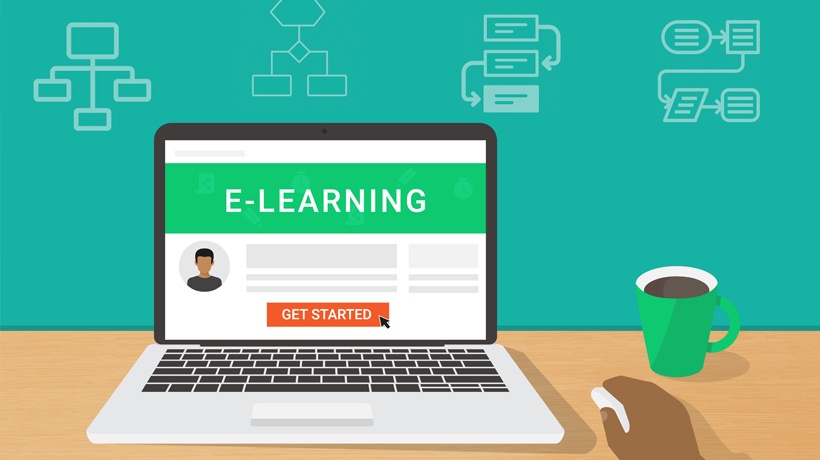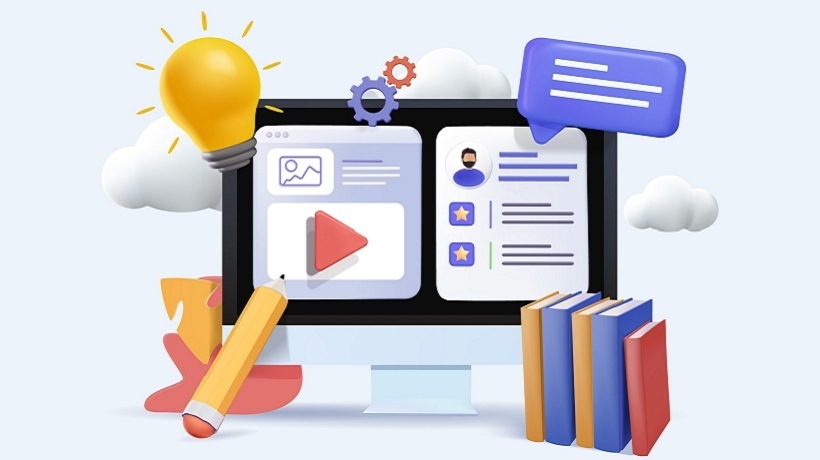Why Organizations Looking To Outsource Need To Know About The Online Course Development Process
2 Hours to go for completing the online course development process! The multimedia developer is synching the audio with the animations in the course. The project manager has warned us yet again not to miss the deadline. The Instructional Designer sat with the developer to give the final touches to the course. The developer published the course to SCORM format using Articulate Storyline. I started the QA, checking the functionalities of the course. I am done. No bugs found, mailed the course to the project manager.
By the way, let me introduce myself. I head the Learning Design team in our organization. I worked with several companies that are into manufacturing, Pharma, and Software services to develop online learning solutions for their various training needs. Most of these organizations were first timers to eLearning who outsourced their online course development to us.
A majority of the organizations that venture into eLearning outsource their eLearning course development to vendors. In many instances, as these organizations are new to eLearning, they end up spending more dollars and time than estimated, resulting in courses that are far from their expectations. This happens mostly due to a lack of communication and understanding with the eLearning vendors.
Here I would like to share an online course development process we adopted to facilitate the active involvement of the client with us right from the beginning of the course development till the end. This process helps organizations (clients), especially those new to eLearning, in developing eLearning courses within the stipulated timelines and budgets when they outsource.
The process has 3 phases:
- Phase 1: Setting Expectations.
- Phase 2: Developing The Prototype.
- Phase 3: Developing A Full-fledged eLearning Course.
Let us see each of them in detail.
Phase 1: Setting Expectations
In the initial stage, the vendor tries to understand the organization’s requirement. In most cases, organizations new to eLearning come up with the requirement to convert their existing classroom training materials available in the form of PPTs, PDFs, manuals, etc., to eLearning. They often have no clear expectations and are not aware of what goes into the online course development process and their level of involvement with the vendors.
In this phase, the vendor understands what the organization is trying to achieve with their eLearning initiative. He educates them about eLearning, what goes into the process of developing and implementing eLearning, and the suitability of eLearning for the given requirement or goal. He shows sample eLearning courses on similar subjects developed by them earlier. He helps the organization know what they can expect from his services.
Once the expectations are set, the vendor defines the scope of the project, discusses the instructional strategy, and takes the sign off from the stakeholders.
He then analyzes the content (existing training material), talks to Subject Matter Experts of the client, understands their expectations, sets the learning objectives, prepares the outline and then gets the approval from the training manager and Subject Matter Experts or other stakeholders involved in the project to proceed to the next phase.
Phase 2: Developing The Prototype
A fully functional prototype is developed to give stakeholders a fair idea of how the eLearning course that’s going to be developed looks like. Here the training manager or the stakeholders involved get the look and feel of the course GUI, visualization, and instructional strategy that will be used to develop the course. Any changes or dissatisfaction from any of the stakeholders is dealt in this stage itself. The prototype would also be run on the Learning Management System to detect any technical errors that may creep in. Once the prototype is approved, the project moves on to the next phase.
Phase 3: Developing A Full-Fledged eLearning Course
In this phase, the storyboard is developed on the lines of the Prototype signed off. The storyboard is created by the Instructional Designer in a MS Word document or PowerPoint where the onscreen content, audio script, and presentation patterns (interactivities, animations, images, and other media elements) are clearly described. This storyboard is sent to the stakeholders for their review. Any changes suggested are implemented and sent back to the client for the final approval.
Once the storyboard is approved, the first version of the course without audio will be developed using a rapid authoring tool (Articulate Storyline, Captivate, or Lectora). On approval of the first version of the course from all the stakeholders involved, the audio script will be sent for voice narration and embedded in the course. The final version of the course will now be ready to be delivered to the learners.
When partnering with vendors, the important aspect, among others, is to know about their process of developing eLearning courses. Because an efficient process that facilities your involvement at regular intervals can reduce your course development time by many folds and thereby ensure the timely rollout of eLearning in your organization without any last minute surprises.
To know more about outsourcing your eLearning requirements for the first time, read the eBook eLearning: Getting Your Organization READY.










